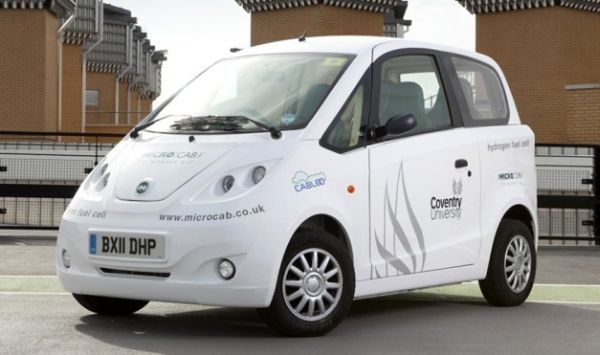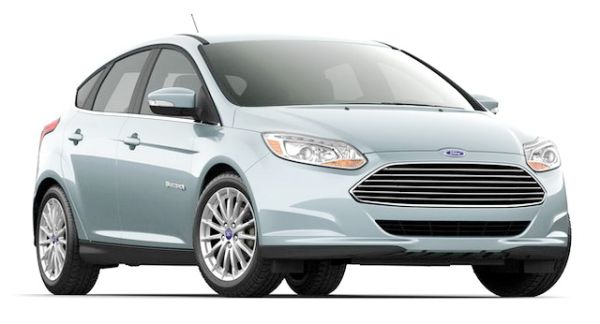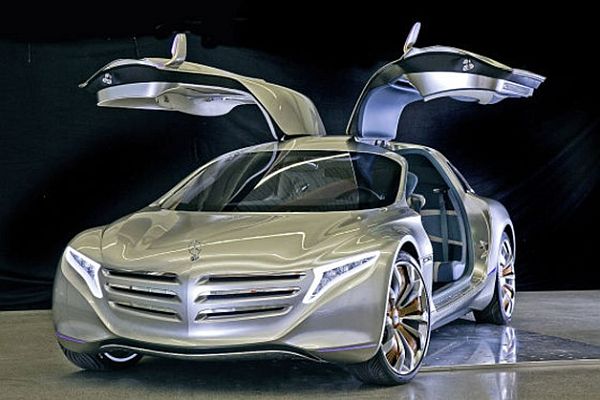
The green machine
The H2EV is the latest hydrogen-fuel-based car launched by Microcab which has worked in collaboration with Delta Motorsport . The launch coincides with the launch of Honda’s hydrogen fueling station in Swindon which also happens to be a first in UK. A fleet of these Microcab cars will be on trial in an attempt to collect data on the ultra-low emissions they promise. Since manufacturer Lotus has also been associated with the engineering in this project, there is great optimism about the launch of this fuel cell car.
Green factor
The H2EV runs totally on hydrogen and the exhaust is water! You could not have gotten cleaner than this. This four-seater vehicle uses the reaction where hydrogen combines with oxygen releasing electricity and producing water-vapor as the only emission. In an age where competitors are striving to reduce the carbon footprint, this car totally eliminates it. With the growing hydrogen fuel infrastructure in UK, the H2EV presents a totally green option for the customers. Unlike fossil fuels that stand the danger of completely running out of availability, the earth faces no such shortage as far as hydrogen is concerned! Thus, we have a vehicle that can run on a green and abundantly available fuel.
The power train
The H2EV is powered by a 3kW engine which is connected to the fuel cell. The fuel cell generates electricity from the electrolysis reaction. The vehicle provides about 120 miles for each recharge of hydrogen under optimum running conditions. It easily provides an average of 100 miles otherwise. The car is rated to have a top speed of 40 miles per hour. Coventry and Birmingham Low Emission Demonstrator ( shortened as CABLED) have been presented a fleet of H2EVs for testing how well this technology can cope with the current infrastructure.
The highs
- Zero-emissions and useful exhaust – an unbeatable combination.
- Once it passes trials, mass production plans are already underway and can be executed with ease.
- Hydrogen is an explosive gas. It is very strongly reactive with air. But as far as safety concerns go, the H2EV’s fuel tank has been made ‘gunfire resistant’ according to company claims.
- The hydrogen fuel infrastructure is developing in the UK. And it has been taken up by giants like Honda. Add this to the already established fuel stations at Coventry University and in Birmingham. The future for this green car looks green!
- Lotus engineering in the car definitely adds lot of credibility to the vehicle.
- The car will be available in taxi and car options, thus serving a larger clientele.
- Unlike electric hybrids, this car can be refueled in a matter of minutes and not hours.
- These cars are going to be marketed as cabs and once they hit the roads, they will dramatically reduce the pollution.
The Lows
- At 40 miles an hour, there will definitely not be many vehicles on the road that you will outrun with this car. Slow and steady may be good but when there are vehicle options that are fast and steady, its time for more thinking.
- Though hydrogen fuel is the fuel for the future, with just three filling stations totally, there is a serious infrastructural difficulty for the car owners when it comes to refueling.
- The cost of commercial hydrogen fuel is high. The car cannot be recharged at home and so the owner has to take the car to great distances for even refueling (since there are very few stations) and this in itself will guzzle fuel.
- Most of the regular vehicles run on100 kW engines. This is a real dwarf at 3 kW!
Cost and availability
Once the trials are successful, mass production plans are on. Not much information is available in the cost section. There is talk that the vehicle will be available at the same price of gasoline cars. This means that it is at least three to four times costlier than other EV cars like the Nissan Leaf.
Word around the web
The car has won itself some instant fans and instant haters on the web. Monitoring the web chatter, we realize that the fans are blown away by the ‘green’ nature of the car. They believe that this is the car for the future for it carries the fuel for the future. The ‘haters’ are upset about the cost factor and the low availability of recharge options. Some do not even consider it as a car and term it a ‘gadget’ since it cannot go above 40 mph. There are some who are wondering as to why efforts were not made to get into hydrogen fuel in a ‘big’ way with larger engines, larger tanks and basically a larger car. There are many who wish to ‘wait and watch’ keeping their fingers crossed.




